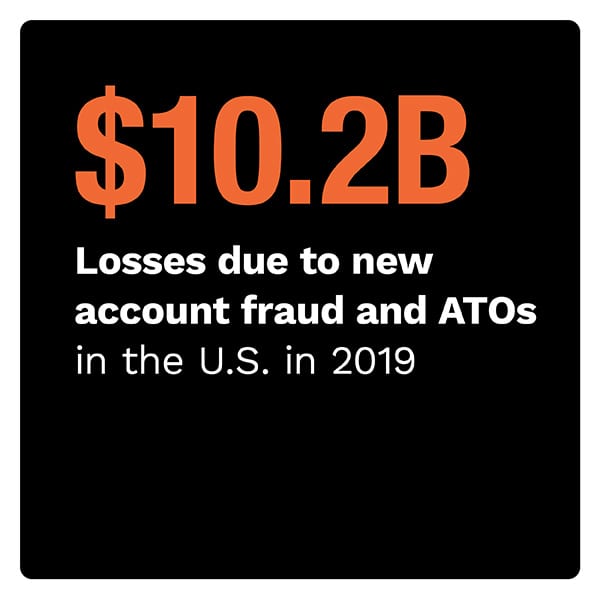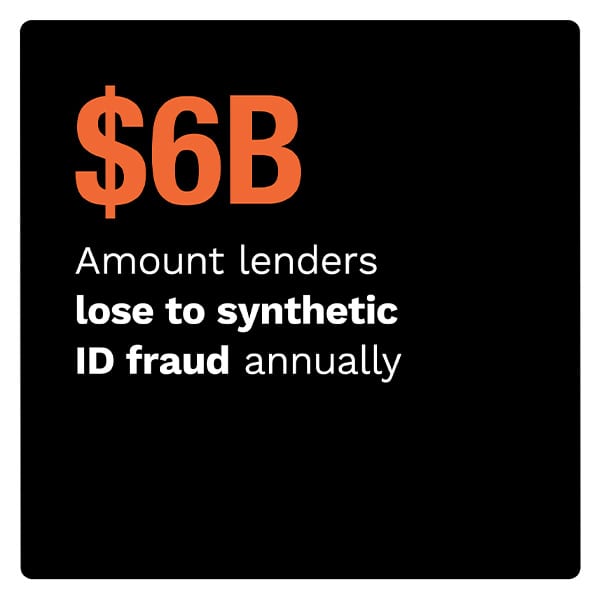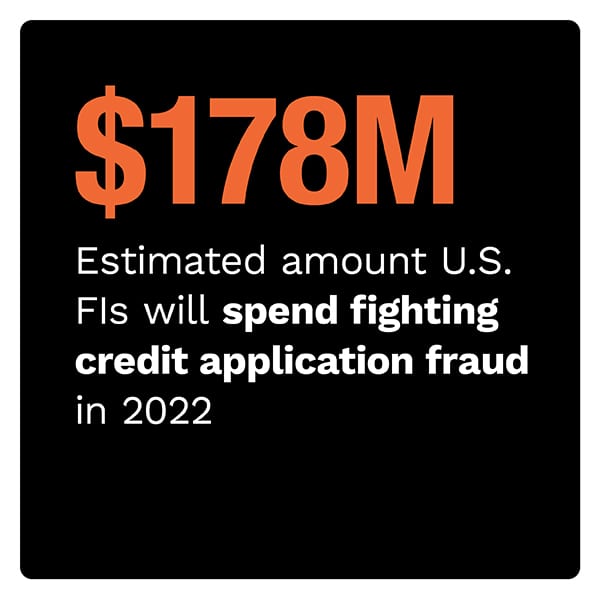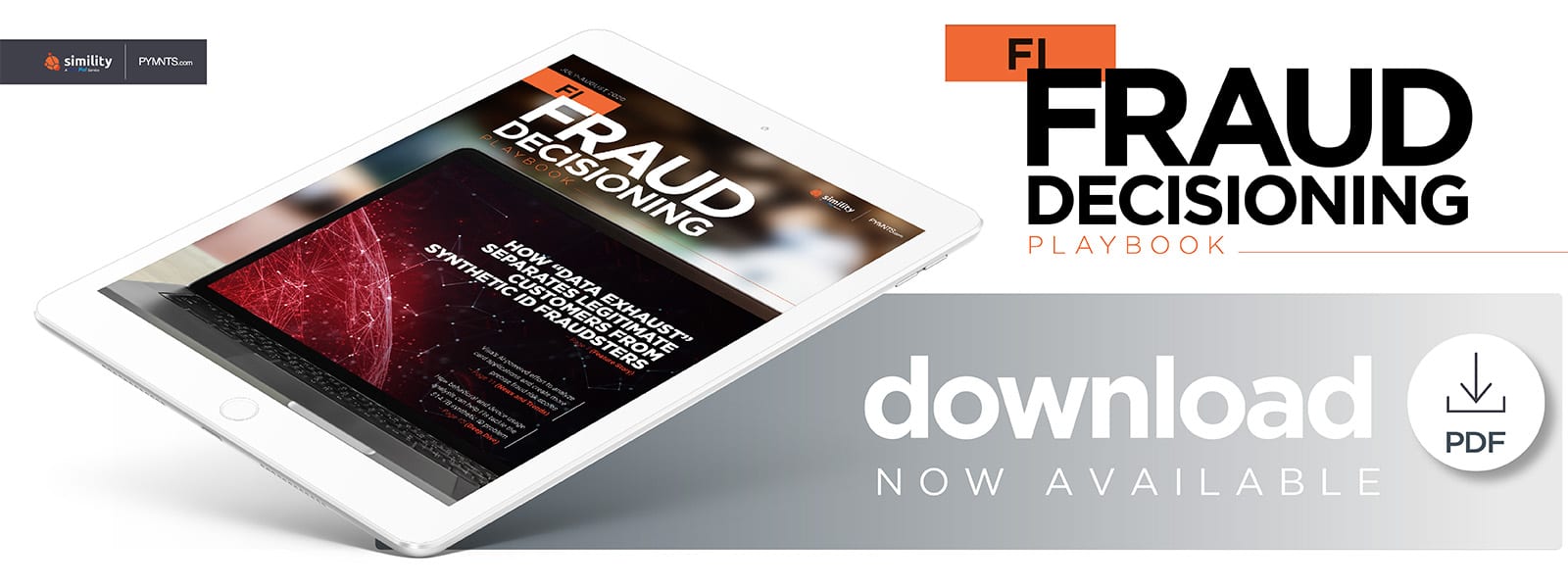New Report: How FIs Are Finding Fraudsters Wherever They May Hide

Synthetic identity fraud is costing companies heavily, with $14.7 billion lost to this type of crime in 2018 alone.
This is a particularly subtle and nefarious kind of attack, in which bad actors create fake identities using real details stolen from different consumers. The result is a persona that often holds up against financial institutions’ (FIs’) traditional verification methods. Criminals can then use these identities to open bank and credit union accounts, secure loans and ultimately vanish without ever repaying.
The July-August FI Fraud Decisioning Playbook examines how FIs are upgrading their strategies to better detect and thwart this fast-growing form of crime.
Around The FI Fraud Decisioning World
Banks’ fraud-fighting measures must go beyond just determining whether the customer details provided by new applicants are legitimate. FIs also have to ensure all those details actually belong to the same, real individuals. This work requires checking for discrepancies between how the customers present themselves and how they actually behave, such as whether users are engaging via devices located in certain countries while professing to be from others.
Lenders can find it particularly challenging to detect synthetic ID fraud because criminals often spend the time to develop good credit scores before applying for loans. Those good credit scores are usually treated as “green flags” indicating that the customer will be trustworthy — a mistake when confronting synthetic fraud. Visa is now hoping to help FIs develop more accurate risk scoring methods. The credit card company is using advanced analytics tools to examine data on millions of card applicants and fraud incidents to help determine patterns that could better indicate risk.
The mounting problem of synthetic ID fraud has caught the attention of the U.S. Federal Reserve, which recently advised FIs to check whether new customers’ applications include any personal details that are already being used by existing customers at their banks or other banks. This kind of data sharing can help FIs detect red flags, such as two different customers with the same Social Security number (SSN).
To find more about these and the rest of the latest headlines, download the Playbook.
Why Using Device Authentication, Nontraditional Data Can Help FIs Catch Synthetic ID Fraud
FIs need to make sure that they can both accurately pinpoint fraudsters and avoid mistakenly sweeping up and blocking legitimate users. Doing so requires them to not only verify applicants’ government-issued identification details, but also examine the individuals’ behavioral patterns, plus the usage histories of the devices with which the would-be customers transact, according to John Kelly, chief administrative officer at Pentagon Federal Credit Union.
In this month’s Feature Story, Kelly details how device authentication and other measures can power the fight against synthetic ID fraud.
 Read the full story in the Playbook.
Read the full story in the Playbook.
Deep Dive: Confronting FIs’ $14.7B Synthetic ID Problem
Synthetic ID fraud is a rapidly growing form of crime, which FI’s usual security measures too often fail to catch. Fraudsters have become adept at stealing pieces of identity details from unsuspecting victims and creating very realistic fake personas.
This month’s Deep Dive examines how synthetic ID fraudsters do their work and the ways that FIs are using improved SSN checks, behavioral analysis and other strategies to strike back.
Get the scoop in the Playbook.
About The Playbook
The FI Fraud Decisioning Playbook, a collaboration between PYMNTS and Simility, a PayPal Service, examines how understanding legitimate customers’ behaviors can help banks spot and eliminate malicious activities.
